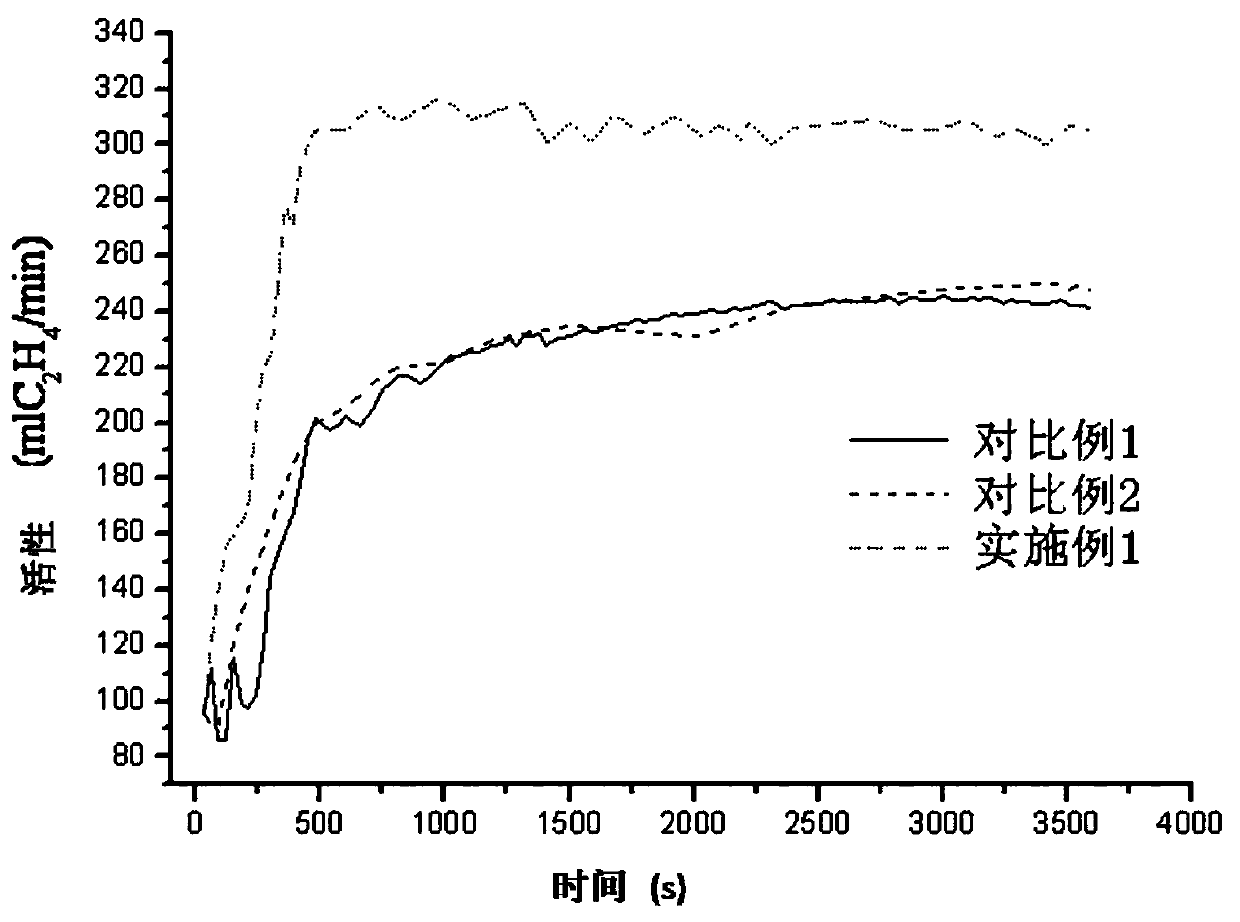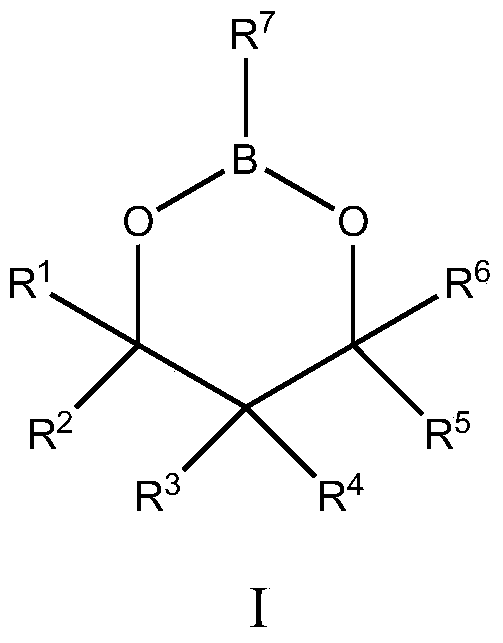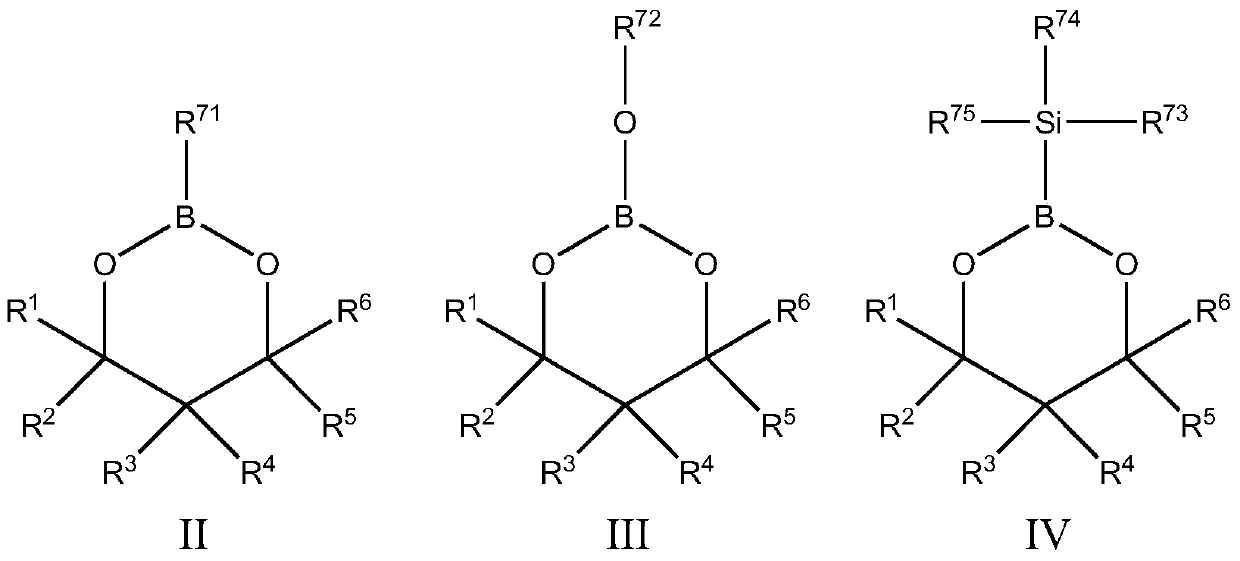A catalyst component for ethylene polymerization, its preparation method and application
A technology for ethylene polymerization and catalysts, which is applied in the field of supported chromium-based catalyst components, and can solve the problems of undisclosed chromium-based catalyst systems, etc.
- Summary
- Abstract
- Description
- Claims
- Application Information
AI Technical Summary
Problems solved by technology
Method used
Image
Examples
Embodiment 1
[0050] Take 10g of silica gel (W.R.Grece&Co.–Com 955, the pore volume is about 1.1-1.8cm 3 / g, the surface area is about 245-375m 2 / g) Dry at 200° C. for 4 hours under nitrogen fluidization. Add 0.5 g of bis(triphenylsilyl) chromate into the reactor fully replaced with anhydrous and oxygen-free nitrogen, then add 300 ml of hexane, stir at room temperature to completely dissolve the solid to form a solution. Add 10g of dried silica gel to the above solution, after stirring, add 2ml (1.3M) diethylethoxyaluminum hexane solution, stir at room temperature for 1 hour, then add 2.4mmol of 5,5-dimethyl base-2-phenyl-1,3,2-dioxaborane, stirred at room temperature for 1 hour, and then removed the solvent to obtain a chromium-containing catalyst component. The polymerization evaluation results of the catalysts are listed in Table 1.
Embodiment 2
[0052] Take 10g of silica gel (W.R.Grece&Co.–Com 955, the pore volume is about 1.1-1.8cm 3 / g, the surface area is about 245-375m 2 / g) Dry at 200° C. for 4 hours under nitrogen fluidization. Add 0.5 g of bis(triphenylsilyl) chromate into the reactor fully replaced with anhydrous and oxygen-free nitrogen, then add 300 ml of hexane, stir at room temperature to completely dissolve the solid to form a solution. Add 10 g of dried silica gel to the above solution, then add 2.4 mmol of 5,5-dimethyl-2-phenyl-1,3,2-dioxaborane after stirring, and stir at room temperature for 1 hour Then, 2 ml (1.3 M) of a hexane solution of diethylethoxyaluminum was added, and after stirring at room temperature for 1 hour, the solvent was removed to obtain a chromium-containing catalyst component. The polymerization evaluation results of the catalysts are listed in Table 1.
Embodiment 3
[0054] Take 10g of silica gel (W.R.Grece&Co.–Com 955, the pore volume is about 1.1-1.8cm 3 / g, the surface area is about 245-375m 2 / g) Dry at 200° C. for 4 hours under nitrogen fluidization. Add 0.5 g of bis(triphenylsilyl) chromate into the reactor fully replaced with anhydrous and oxygen-free nitrogen, then add 300 ml of hexane, stir at room temperature to completely dissolve the solid to form a solution. Add 10 g of dried silica gel to the above solution, and simultaneously add 2 ml (1.3 M) of diethylethoxyaluminum in hexane and 2.4 mmol of 5,5-dimethyl-2-phenyl-1 , 3,2-dioxaborane, stirred at room temperature for 2 hours and then removed the solvent to obtain a chromium-containing catalyst component. The polymerization evaluation results of the catalysts are listed in Table 1.
PUM
| Property | Measurement | Unit |
|---|---|---|
| diameter | aaaaa | aaaaa |
| specific surface area | aaaaa | aaaaa |
Abstract
Description
Claims
Application Information
 Login to View More
Login to View More - R&D
- Intellectual Property
- Life Sciences
- Materials
- Tech Scout
- Unparalleled Data Quality
- Higher Quality Content
- 60% Fewer Hallucinations
Browse by: Latest US Patents, China's latest patents, Technical Efficacy Thesaurus, Application Domain, Technology Topic, Popular Technical Reports.
© 2025 PatSnap. All rights reserved.Legal|Privacy policy|Modern Slavery Act Transparency Statement|Sitemap|About US| Contact US: help@patsnap.com



